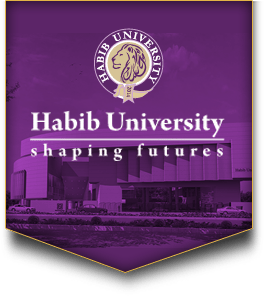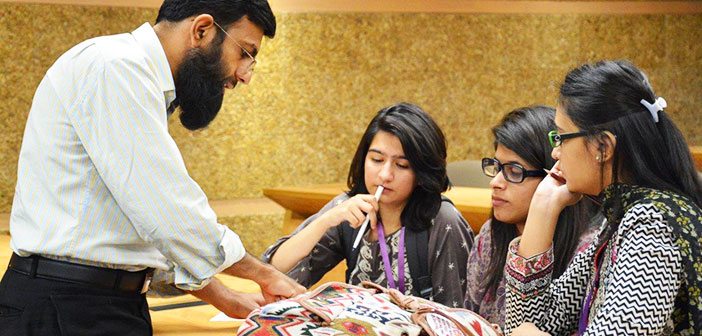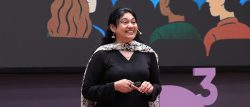Faculty from the School of Science & Engineering have presented and published two new papers on teaching innovative courses that feature extensive lab work.
HABIB UNIVERSITY, January 28, 2016: Recently featured in Nature – one of the most respected publications in the world of science – for introducing truly modern science and engineering programs in the Muslim world, Habib University continues to earn global recognition for developing and delivering innovative hands-on learning projects to its undergraduate students.
Two new papers, co-authored by members of Habib University’s School of Science & Engineering (SSE), have been presented and published internationally in the past two months.
The first paper, titled Getting Practical with Digital: An Integrated Electronic Design Project for Undergraduates, explores the teaching of Digital Logic and Design (DLD) to engineering and computer science undergraduates at HU.
It discusses an innovative hands-on learning module which requires students to build and test a Digital to Analogue Converter (DAC) board by drawing on knowledge gained from three different courses offered at Habib University: Electric Circuit Analysis, Engineering Workshop and DLD.
The paper, co-authored by Dr. Oliver Faust, Dr. Shahid Shaikh, Dr. Muhammad Shumail, Zeeshan Nafees and Dr. Shoaib Zaidi, was presented at IEEE’s International Conference on Teaching, Assessment, and Learning for Engineering (TALE2015), held from December 10 to December 12, 2015 at the United International College in Zhuhai, China.
The authors had been motivated by a desire to practically teach students about how to process data from their surroundings using computers. The DAC they created was unique in that it used a stock Field Programmable Gate Array (FPGA) as a core component instead of an expensive, pre-programmed integrated circuit.
FPGAs are the focus of recent research and developments in the electronic world as they offer much more flexibility in terms of programmability at a fraction of the cost. The DAC developed under this project is currently being used to teach various courses offered at HU.
The second paper, published in the Journal of Embedded Systems, is titled BlueSteps: A Bluetooth Based Stepper Motor Control System. It was co-authored by Ifrah Jaffri, Zeeshan Nafees, Dr. Shoaib Zaidi and Dr. Oliver Faust.
Recounting the experience of teaching students about industrial processes through a practical project, the paper details the thought and work that went into building BlueSteps – a versatile stepper motor control system that runs using hardware and software developed at HU.
BlueSteps is essentially a robotic arm with two degrees of freedom which can be manipulated using a proprietary application installed on a smartphone, which communicates via Bluetooth with an FPGA, which in turn controls a stepper motor. It mimics industrial robots employed in processes like welding, picking things, and so on.
The faculty involved in the project wanted to teach students about the various types of machinery used in industries, so that they can build on this knowledge to innovate and improve them over the course of their academic and professional careers.
Commenting on the relative complexity of these projects and the benefits they offer to students, Zeeshan Nafees – the Research Associate who co-authored both papers – said:
The work we are doing here is aiming to produce post-graduate students at the undergraduate level. No other university in Pakistan is introducing such advanced electronics equipment to its students right at the starting level, or offering them a chance to be involved in research so early on in their careers.




